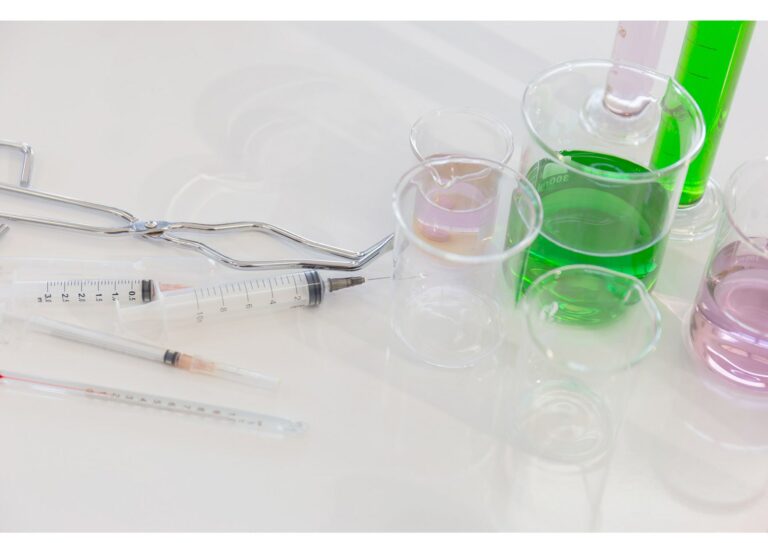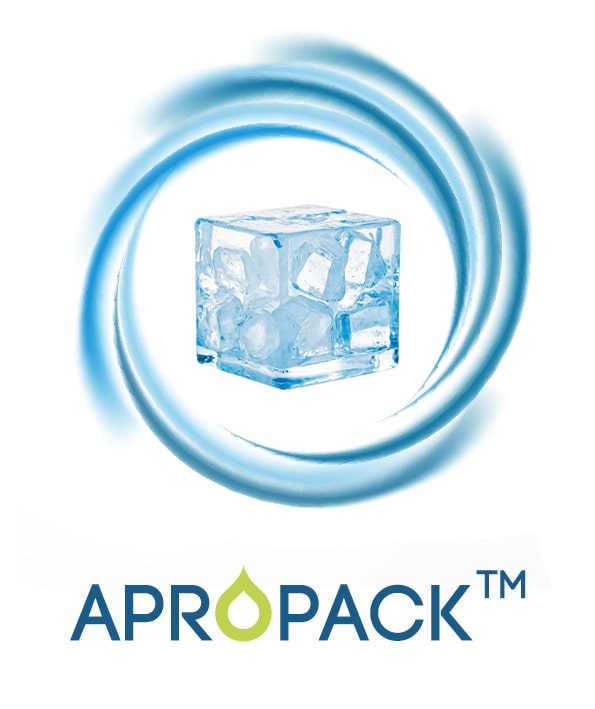
COLD ACCUMULATORS
APROPACK™ products are composed of organic polymers confined in a polypropylene nonwoven.

HEALTHY PRESERVATION DURING TRANSPORT
The refrigeration chain is essential for keeping food and pharmaceutical products safe. It prevents the proliferation of bacteria and preserves appearance and freshness.
Cold is usually provided by ice. However, this leads to liquefaction of the water and rapid bacterial growth. For packaging, this requires hermetically sealed, insulated containers.
APROPACK™ cold accumulators have the appearance of bags available in several formats. These swell on contact with water to form a hydrogel. Once activated, they simply need to be placed in the freezer for a few hours.
In this way, APROPACK™ extends the efficiency of the cold chain by 20% to 25%, without a refrigerated truck, over a 10-hour period.
OPERATION
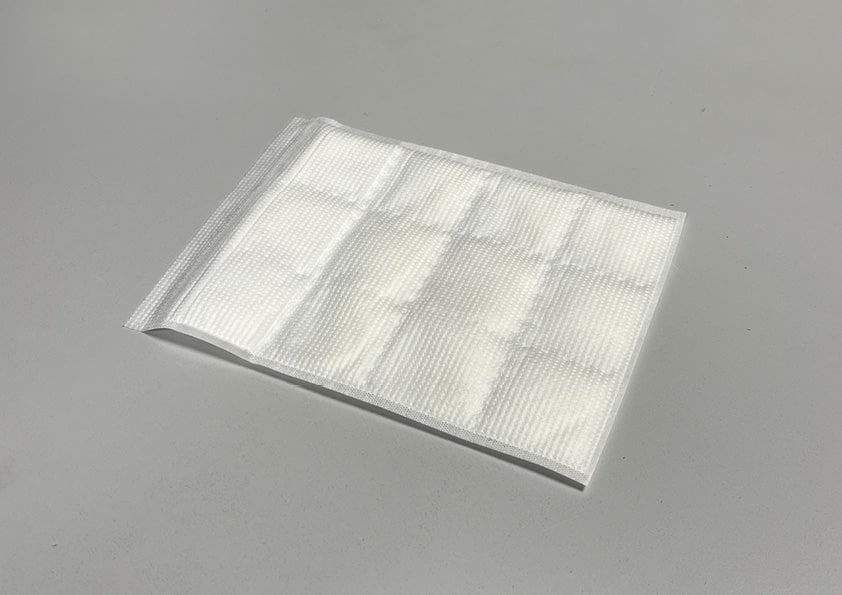
Cold accumulator not activated (dry)
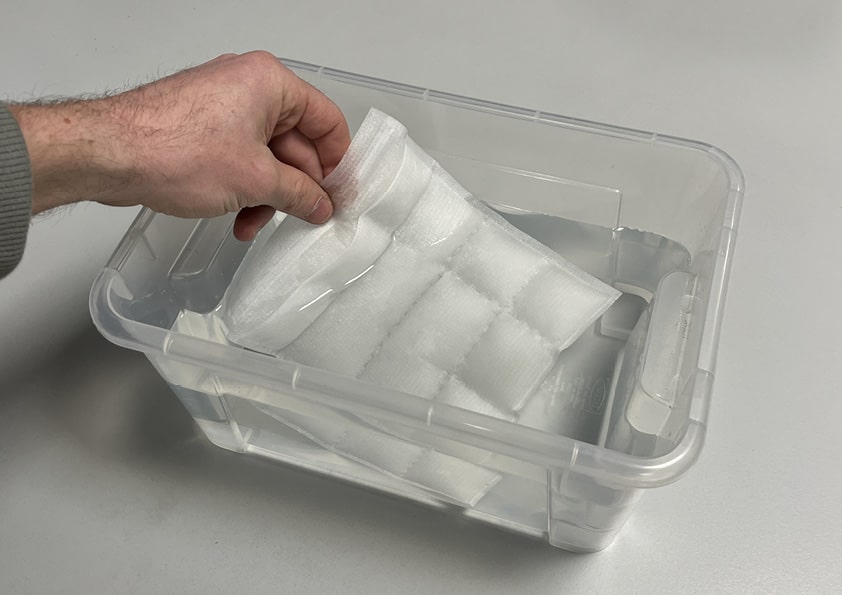
DIVING INTO THE WATER FOR A FEW MINUTES
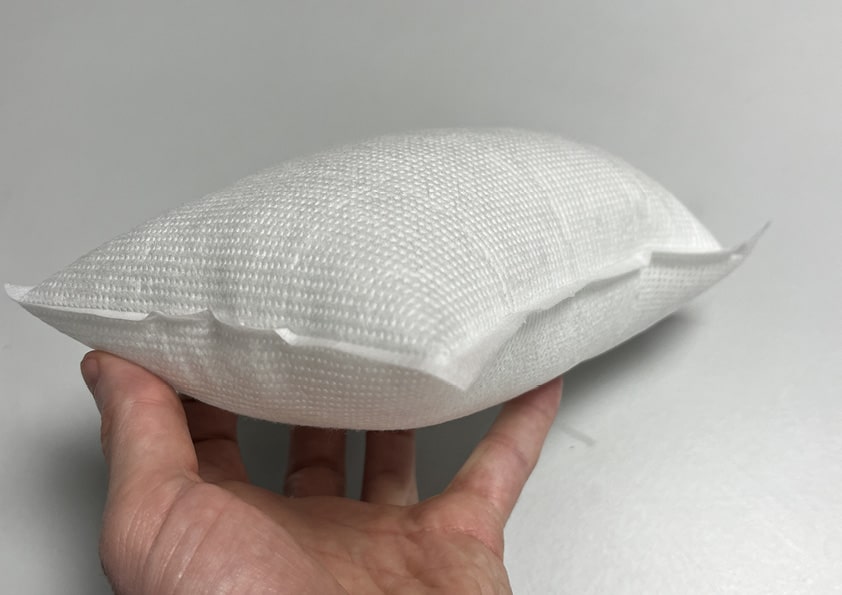
ACTIVATED COLD ACCUMULATOR (hydrated)
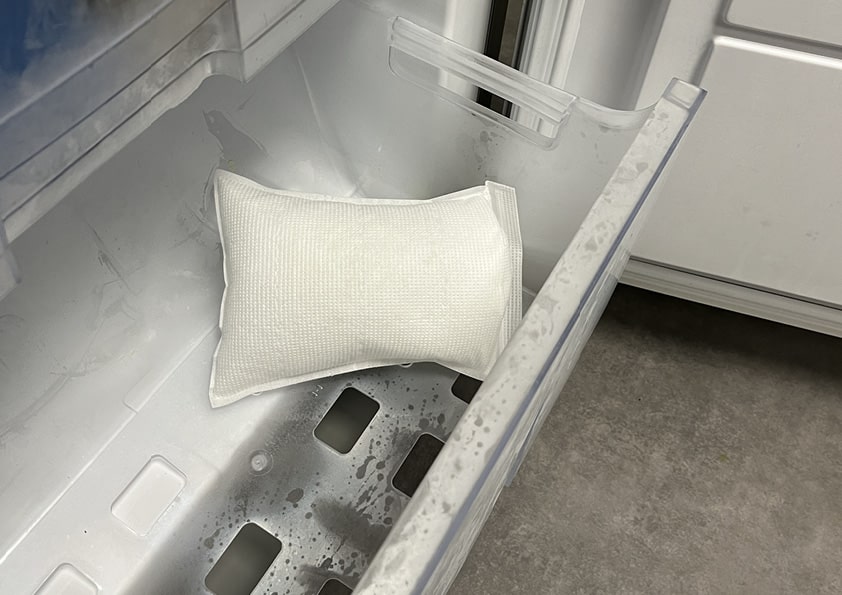
put it in the freezer for a few hours
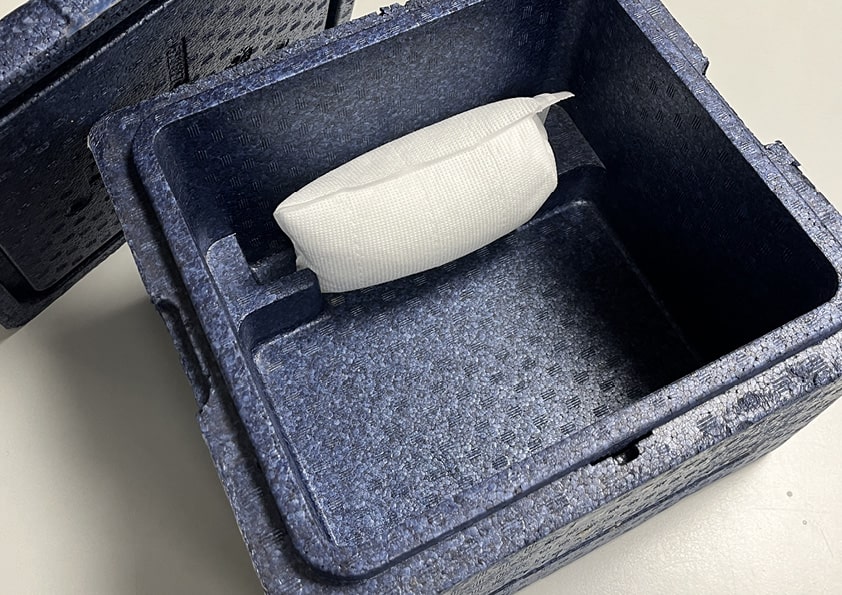
operational accumulator
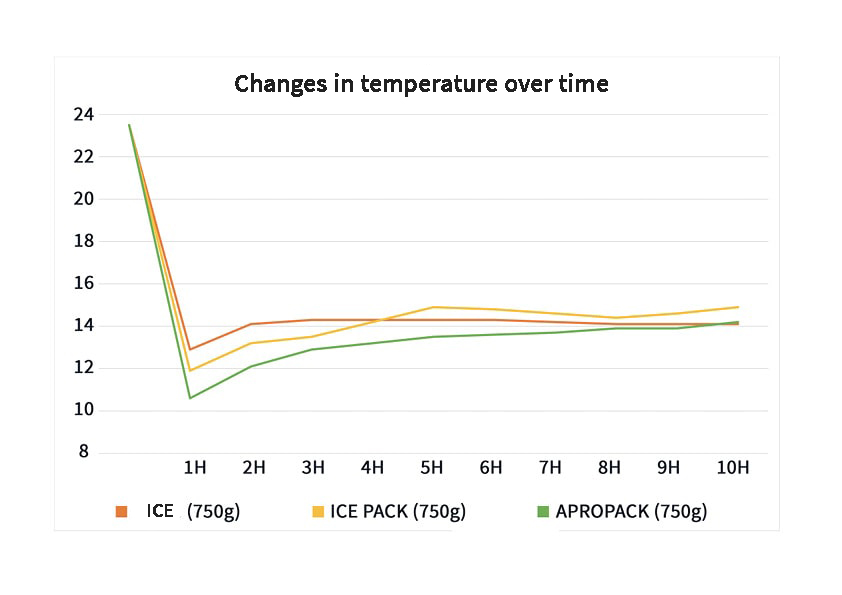
TITRE
Explication APROPACK™
Explication APROPACK™
why choose APROPACK™?
easy to use
easy to use
easy to use
easy to use
effective cold
diffusion for
10 hours
effective cold
diffusion for
10 hours
effective cold
diffusion for
10 hours
effective cold
diffusion for
10 hours
different
formats
available
different
formats
available
different formats
available
different formats
available
easily
transported &
activated on site
easily
transported &
activated on site
easily
transported &
activated on site
easily
transported &
activated on site
ecological
ecological
ecological
ecological
reusable
reusable
reusable
reusable
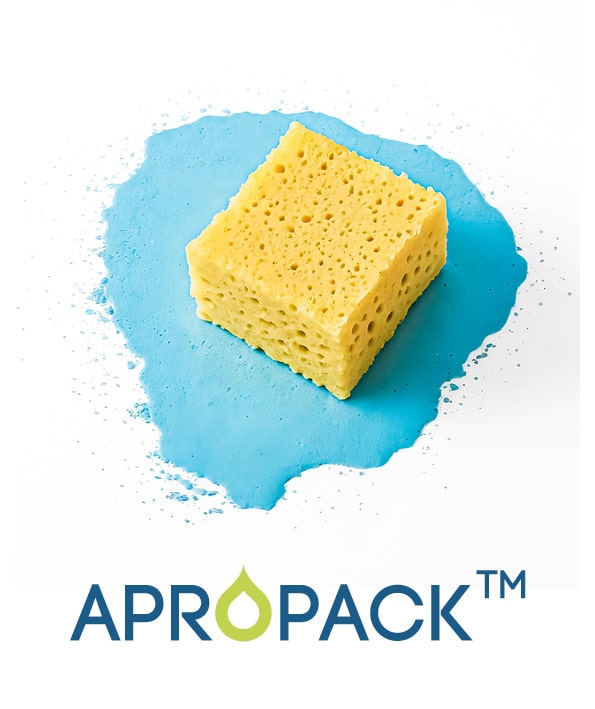
SOLIDIFICATION & ABSORPTION OF LIQUIDS
APROPACK™ can be used as an ultra absorbent sponge. It can be placed at the bottom of crates to absorb juices from food.
In addition, APROPACK™ dipositives are highly effective for absorbing and containing liquid waste in hospitals. They considerably reduce the risks associated with bacterial contamination.

